In modern aerial warfare, distance isn’t just an advantage — it’s the battlefield itself. India’s latest long-range missile, the Astra Mk-III, codenamed Gandiva, is a testament to this evolving doctrine. Just as Arjuna’s divine bow, Gandiva, struck targets with precision, so does this missile, only now at speeds exceeding Mach 4 and distances beyond 300 kilometres. Designed for Beyond Visual Range Air-to-Air Combat (BVRAAM), Gandiva combines cutting-edge propulsion, real-time targeting, and extended reach to dominate the skies.
If you’re looking to understand what makes Astra Mk-III a game-changer, how it compares to previous versions, and where it stands globally, this is your complete breakdown of India’s long-range ramjet-powered air-to-air missile technology.
What Is Astra Mk-III (Gandiva)?
The Astra Mk-III is the third and most advanced iteration of India’s indigenous BVRAAM, developed by DRDO and produced by Bharat Dynamics Limited (BDL). Officially renamed Gandiva in early 2025, the missile is engineered for high-speed engagements with targets well beyond visual range. The defining feature of Astra Mk-III is its Solid Fuel Ducted Ramjet (SFDR) propulsion system. Unlike conventional rocket motors, SFDR sustains higher speeds over longer distances, offering consistent thrust and improved end-game manoeuvrability.
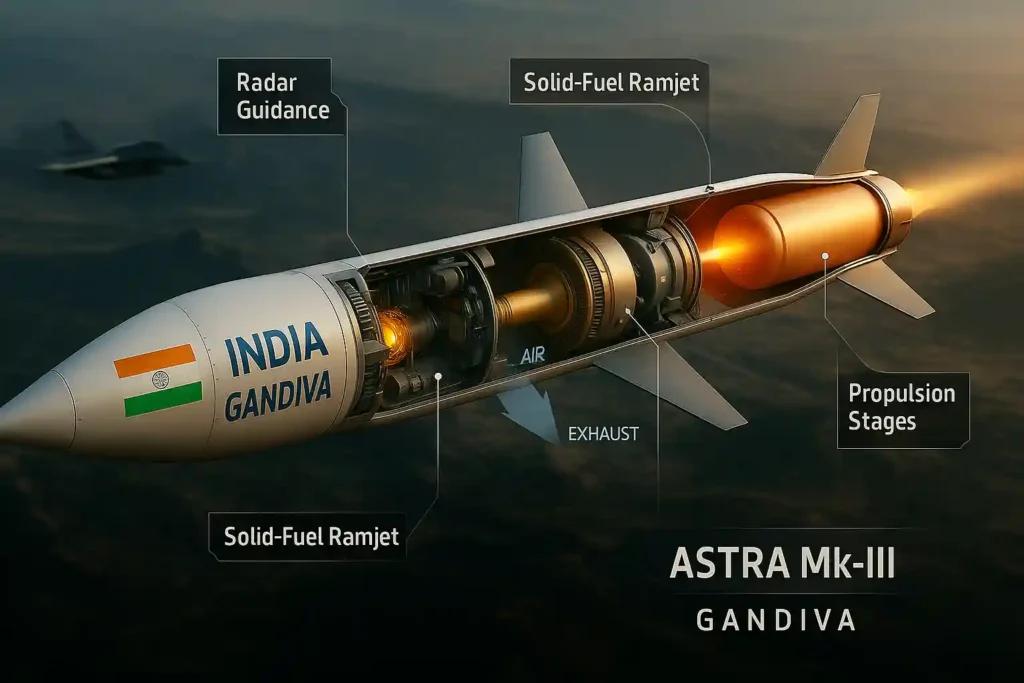
Gandiva is built to neutralise enemy aircraft, airborne early warning systems (AWACS), and aerial refuelling tankers before they can enter combat zones. It offers India a credible first-shot advantage in contested airspace and adds a major boost to the Indian Air Force’s long-range missile capabilities.
Astra Mk-I & Mk-II: The Foundation of Success
Before the emergence of Gandiva, the Indian Air Force successfully fielded the Astra Mk-I and tested Mk-II:
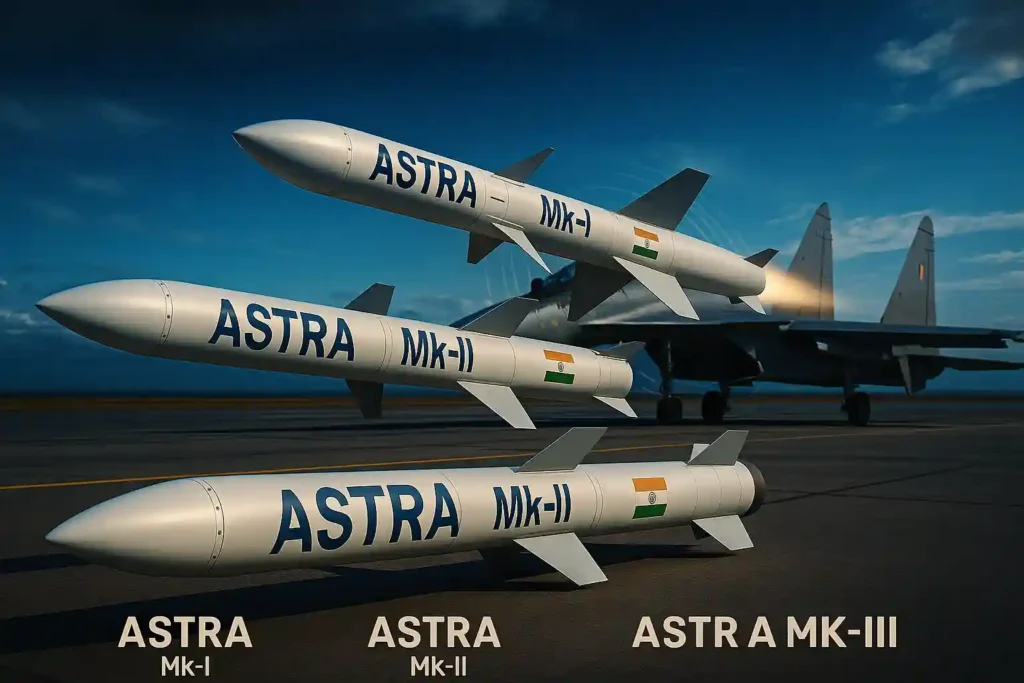
- Astra Mk-I: Entered service in 2019, with a range of up to 110km and a top speed of Mach 4.5. Integrated on platforms like Su-30MKI and Tejas.
- Astra Mk-II: Under development, this variant extends range to around 160km and introduces dual-pulse propulsion and improved seekers for precision in cluttered environments.
Both missiles established India’s competence in indigenous air-to-air missile systems, laying the technological and operational groundwork for Mk-III. The Astra missile series evolution now represents a formidable family of future-ready Indian air-to-air weapons.
Gandiva’s Core Capabilities
What sets Astra Mk-III apart isn’t just its range — it’s the synergy of speed, survivability, and smarts:
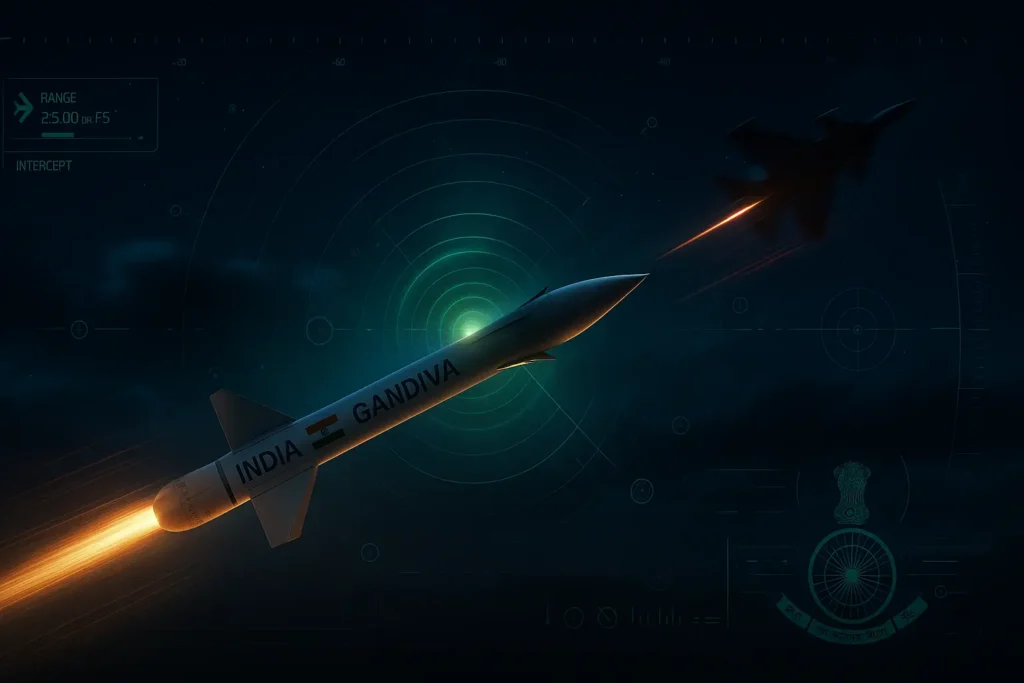
- Propulsion: The SFDR engine allows the missile to maintain high speeds across long distances, with speeds exceeding Mach 4.
- Range: Can strike targets 340 km away if launched from an altitude of 20 km. From lower altitudes like 8 km, it still achieves up to 190 km range.
- Altitude Envelope: Effective between 8 km to 20 km, offering wide operational flexibility.
- Guidance: Equipped with active radar homing and two-way datalink, enabling mid-course corrections and terminal phase agility.
- Counter-countermeasures: Gandiva has advanced ECCM (Electronic Counter-Counter Measures) to neutralise enemy jamming.
This combination ensures that the missile not only travels farther but also adapts mid-flight, tracking evasive targets in dynamic combat zones using seeker technology rivalling top global systems.
Tactical Value of BVRAAMs Like Gandiva
Beyond Visual Range Air-to-Air Missiles represent a strategic asset for any air force. In a conflict, neutralising enemy aircraft before they detect or engage your fighters is the difference between winning and surviving.

Gandiva allows Indian Air Force fighters to engage high-value assets, such as AWACS or refuelling aircraft, without ever crossing enemy lines. This not only keeps IAF pilots safer but also disrupts the enemy’s broader air strategy.
In contested regions like Ladakh, the Indian Ocean, or along the LAC, this capability transforms airspace control. Gandiva marks a turning point in India’s defence innovation and network-centric air superiority.
Global Context: Where Astra Mk-III Stands
In terms of raw performance, Gandiva places India in elite company. The American AIM-120D maxes out around 180km. China’s PL-15 claims up to 200km. Most global BVRAAMs, including the European Meteor, operate below 300km.
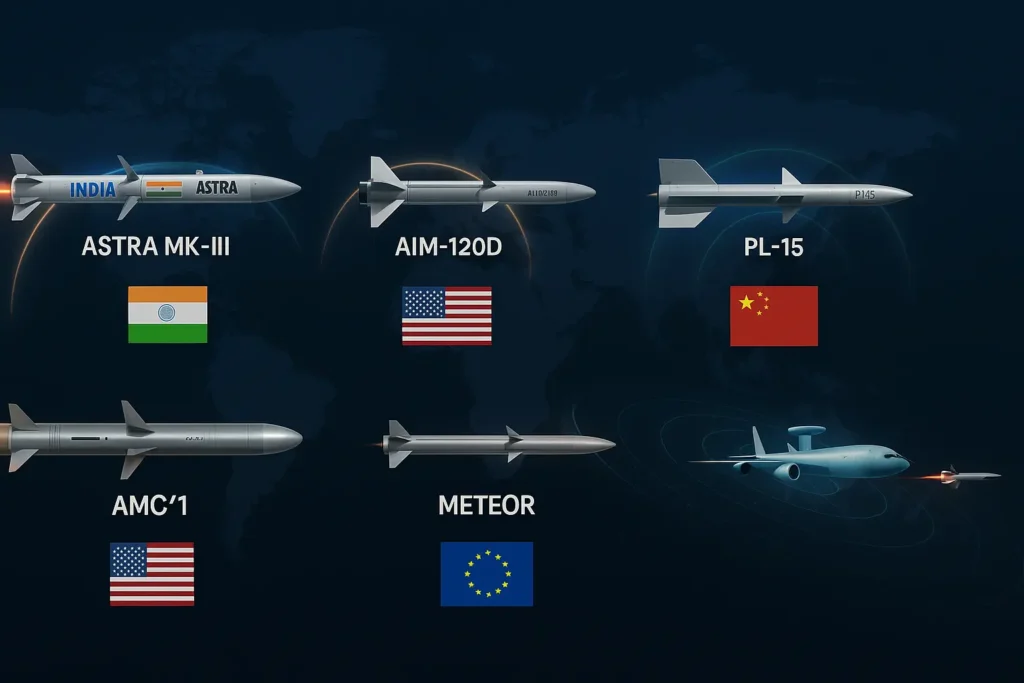
Astra Mk-III’s 340 km reach (at high altitude) and ramjet propulsion are features typically found in missiles like Meteor, but with greater range. Gandiva is among only a handful of air-to-air missiles in the world exceeding the 300 km mark, and it does so with indigenous tech developed entirely by DRDO.
High-Low Altitude Flexibility
One of Gandiva’s standout features is its altitude-dependent range adaptation. When launched from 20 km altitude, it can strike targets up to 340 km away. At lower altitudes, such as 8 km, it still maintains a lethal range of 190 km.
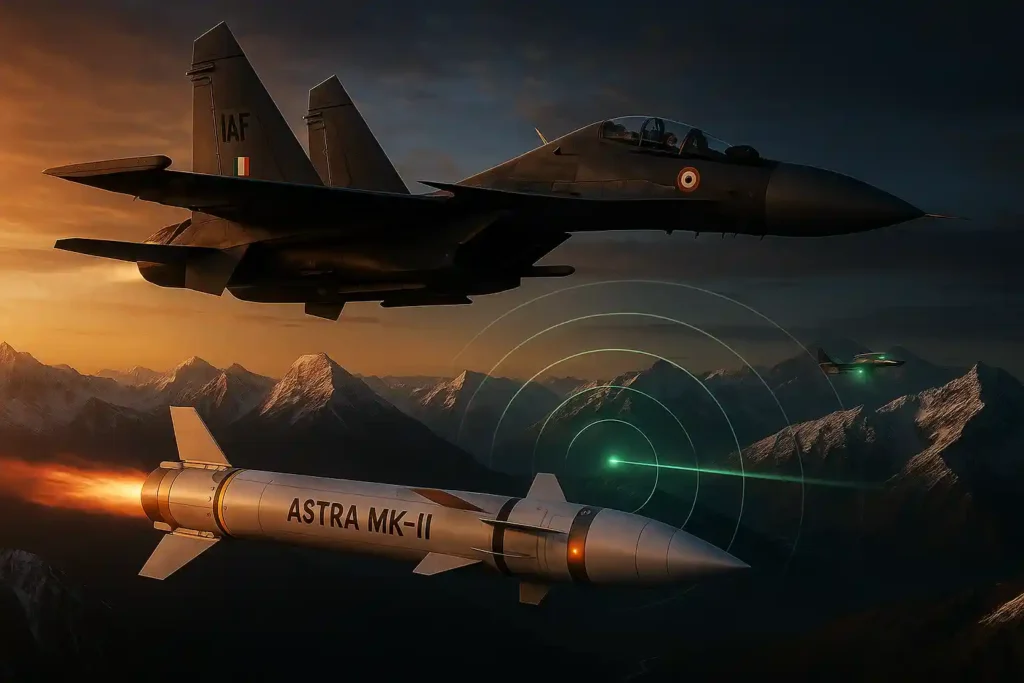
This dynamic performance allows IAF jets to use terrain and flight profiles to their advantage. Whether in mountainous conflict zones or over the sea, Gandiva adapts.
Platform Integration and Future Scope
Initially, Astra Mk-III is being integrated with the Su-30MKI, the IAF’s frontline air dominance fighter. Following that, compatibility with LCA Tejas Mk1A, Rafale, and future platforms like AMCA is being considered.

Additionally, DRDO has signalled that the Gandiva platform may lead to future air-to-ground or ship-launched versions, creating a full-spectrum missile family — including options for BDL-led future production lines.
Strategic Implications for India
Gandiva is more than a missile — it’s a statement. It underscores India’s shift from arms importer to defence innovator. By developing a BVRAAM with comparable or superior capabilities to global systems, India strengthens its military autonomy and reduces dependency.

It also boosts India’s potential in defence exports, especially for nations looking for affordable, high-performance missile tech outside NATO or Chinese spheres. The Gandiva programme could soon join India’s defence export flagship platforms.
Conclusion
From Astra Mk-I’s 110 km, to Mk-II’s 160 km, and now Gandiva’s 340 km strike range — India’s air-to-air missile evolution reflects not just technological growth, but strategic maturity. Gandiva is fast, flexible, accurate, and indigenous.
Whether defending borders or projecting air dominance, Astra Mk-III gives India the ability to strike first — and strike far.
FAQs About Astra Mk-III Gandiva
Q1: What is Astra Mk-III?
It’s India’s third-generation BVRAAM, renamed Gandiva, powered by SFDR and capable of engaging targets up to 340 km away.
Q2: What does Gandiva mean?
Named after Arjuna’s mythological bow in the Mahabharata, symbolising precision and power.
Q3: How is it different from Astra Mk-I and Mk-II?
Mk-III offers double the range of Mk-I and more than Mk-II, plus a ramjet engine for sustained thrust.
Q4: How does it compare to global missiles?
Outranges most, including AIM-120D and PL-15. Comparable to Meteor, but built indigenously.
Q5: Which aircraft will carry it?
Su-30MKI initially; integration with Tejas, Rafale, and AMCA planned.
